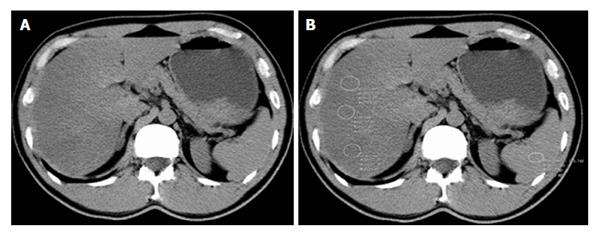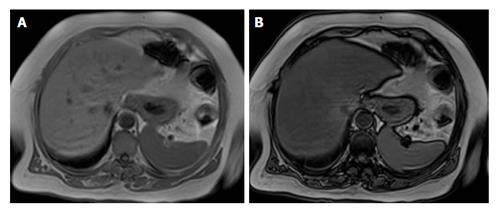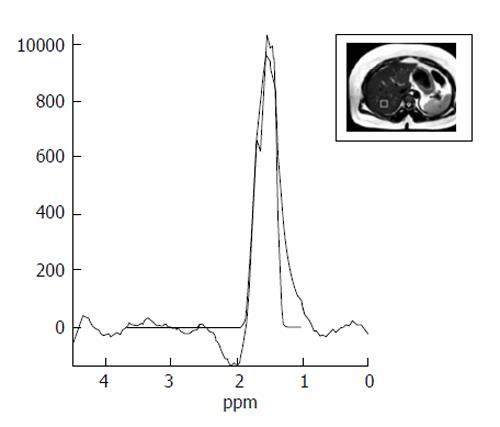Copyright
©The Author(s) 2015.
World J Hepatol. Apr 18, 2015; 7(5): 769-776
Published online Apr 18, 2015. doi: 10.4254/wjh.v7.i5.769
Published online Apr 18, 2015. doi: 10.4254/wjh.v7.i5.769
Figure 1 Ultrasonographic images show the hepatosteatosis stages.
A: Grade 1: mild fatty liver; B: Grade 2: moderate fatty liver; C: Grade 3: severe fatty liver.
Figure 2 Computed tomography evaluation of fatty liver using a liver-to-spleen attenuation difference with unenhanced computed tomography.
A: Diffuse fatty infiltration of liver with attenuation much lower than the spleen on visual analysis; B: Multiple regions-of-interest (white circles, ROIs) show mean hepatic attenuation (25 HU) and splenic attenuation (51 HU) with -26 HU liver-to-spleen attenuation difference, pointing to moderate-to-severe hepatosteatosis.
Figure 3 Magnetic resonance imaging evaluation of fatty liver using chemical shift imaging.
A: In-phase image; B: Out-of-phase image. When out-of-phase image is compared with in-phase images, it shows the signal intensity decrease.
Figure 4 Magnetic resonance spectroscopy image shows a lipid peak in a case of grade 3 hepatosteatosis.
- Citation: Koplay M, Sivri M, Erdogan H, Nayman A. Importance of imaging and recent developments in diagnosis of nonalcoholic fatty liver disease. World J Hepatol 2015; 7(5): 769-776
- URL: https://www.wjgnet.com/1948-5182/full/v7/i5/769.htm
- DOI: https://dx.doi.org/10.4254/wjh.v7.i5.769












